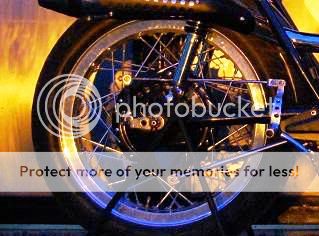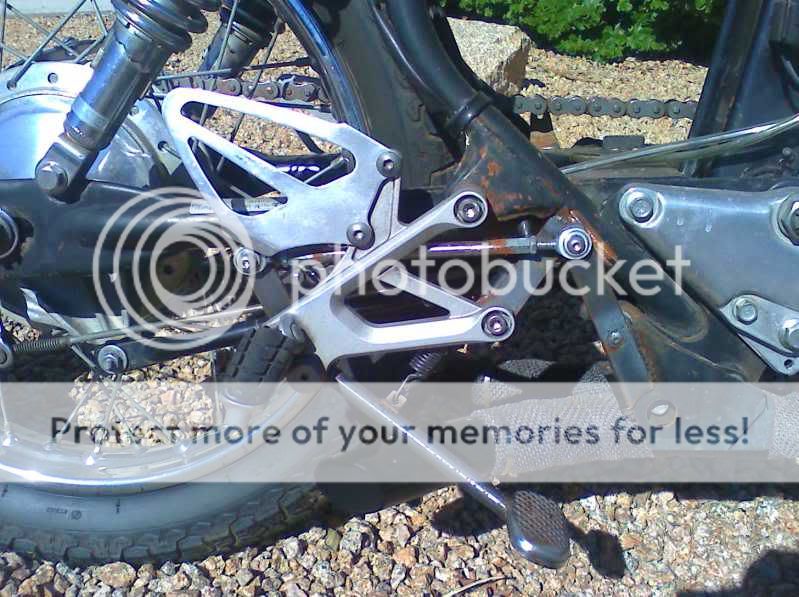biker_reject
Over 1,000 Posts
Can the rear brake lever on the CB drum be reversed from pulling to pushing?

Tim said:While the mechanics on the cam inside the brake drum would be fine, the rod connecting the brake pedal to the lever on the drum isn't engineered to support pushing. Why do you want to do this?

crazypj said:Usually the trailing shoe has higher leverage end of cam operating it and leading shoe has lower leverage (by 'length' of cam)
flipping operating lever means the leading shoe has more leverage applied to it and tailing shoe less leverage so you operate one shoe more effectively and one shoe less effectively.
The leading shoe wears out substantially faster with flipped operating lever but brake feel doesn't appear much different due to less effective brake (usually a little more 'grabby')
Frankenfe said:I would not be as concerned about Push or Pull as long as the linkage rod is hefty enough to not bend under pressure in a "Flipped / Push" scenario.
The the bigger questions to me in designing rear set linkage are:
A) Where is the point the force is exerted on the linkage rod in relationship to the swivel point of the swing arm. I would think that if not properly located, pressure/force at the drum will fluctuate under braking as the swing arm moves up and down.
B) The length of 1) the brake pedal from its pivot point 2) the brake pedal linkage lever to its pivot point.
Changes in these from the original lengths will cause a change in pedal travel and necessary force on the pedal to yield the same energy/force at the drum.
While more difficult I chose to go from the new rear set brake pedal forward to the original brake pedal pivot point and then use the original linkage back from that point. this assured me there would not be any issue with swing arm movement and allowed me to address the necessary "force" and "travel" issues by adjusting the lengths of the pedal and levers up to that point. I ended up with a little (8.3%) less force necessary and a little (8.69%) more travel than the stock pedal to apply the force/travel of the original.
These sites may help:
http://www.engineersedge.com/calculators/levers/page_levers_1.htm
http://www.engineersedge.com/calculators/levers/page_levers_2.htm
Here is my brake set up: this "Dual Rod" set up gives me lots of adjustment to find the correct static pedal position, (and I am still working out what that will be for my riding position)

Swagger said:First off, far be it from me to go against PJ but I'm looking at a CB450 drum this very moment and the cam is exactly the same on each face. There is no offset face that would give different leverage. The CB125 and XS650 rear that I have here also look to be the same, so swapping the lever position won't have any negative impact as long as you linkage work.
I can snap pics if you need them.
One other thing that I hesitate to bring up but will anyway....
I think you're going to hate your rearsets the way you have them currently. They are awfully low and I think they'll drag pretty quickly if you attempt anything more than a city street corner at near walking pace. You may even drag at that creep-along speed. You'll be far happier if you take the time to raise them a couple inches unless you aren't planning much cornering.
or not...
